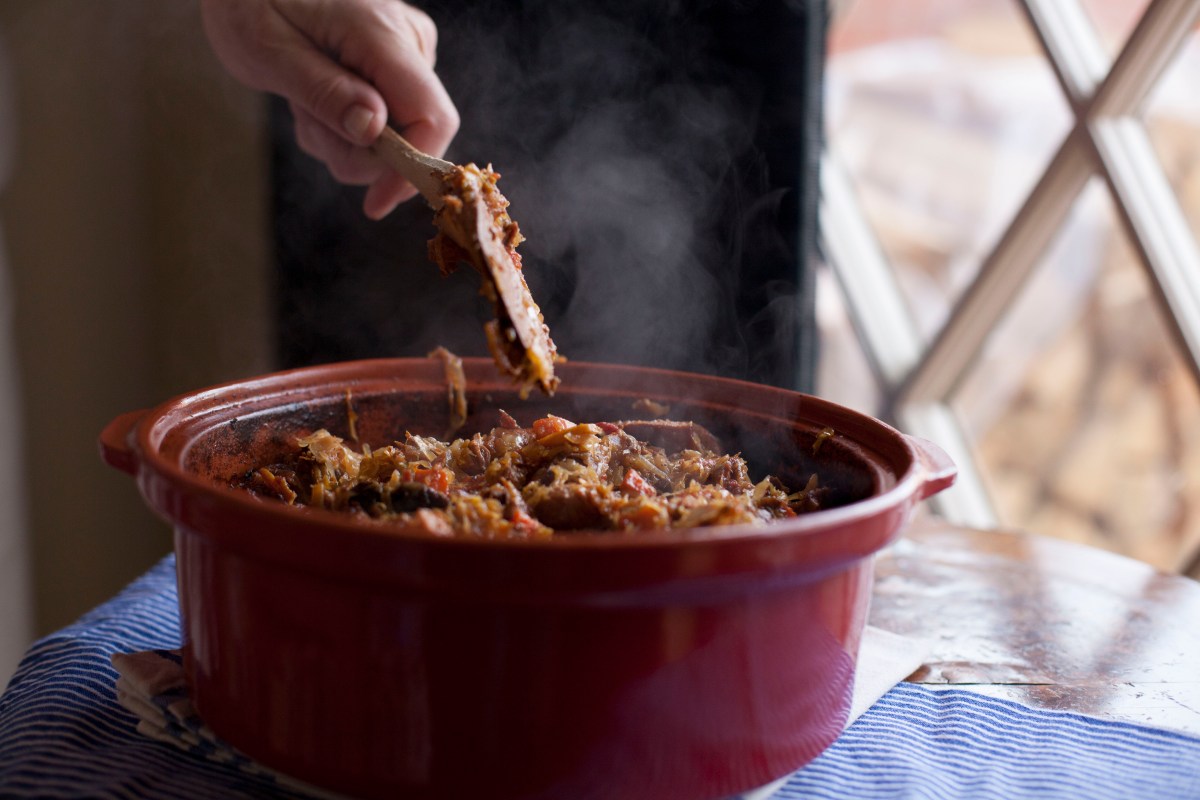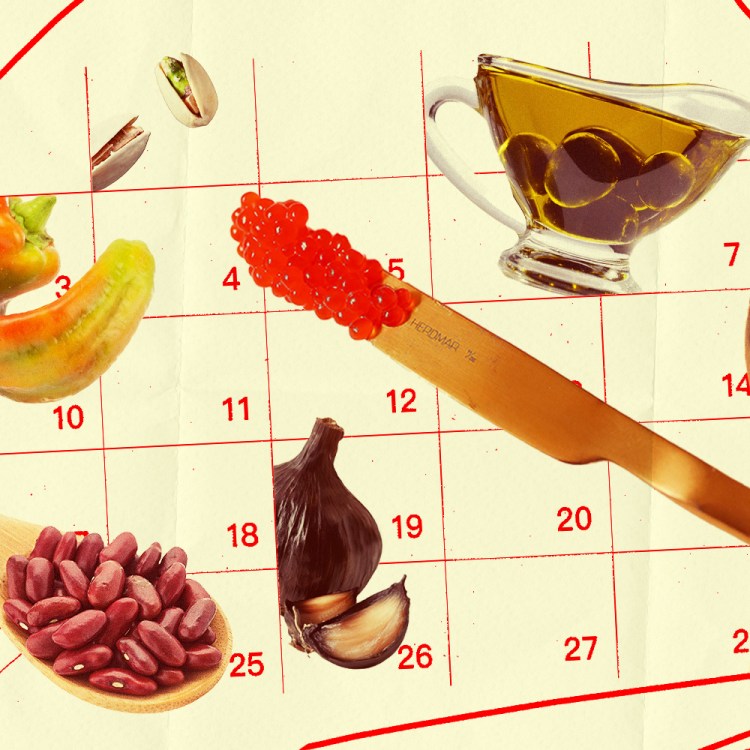This is the first in a series of pieces we’ll be running all month on Jim Harrison and Legends of the Fall, the InsideHook Book Club pick for November. You sign up for our Book Club email to receive important updates, announcements and notifications here.
It only takes six pages in Legends of the Fall for Jim Harrison to make you hungry. At least, that is, if you like pungent food. It’s a pork loin made for the American Diller at a mission in Mexico in the novella’s first story, “Revenge.” We find that Diller “liked best the sauerkraut in the bottom soaked with pork fat” at the end of the meal.
While he doesn’t go into many of the details, it’s easy to imagine what goes into making the pork loin and fermented cabbage — not much. It’s a simple dish. Go up to the Midwest, and you’ll maybe find something like this with apples and onions added, an old-school German- or Polish-American favorite consumed after long, cold days doing much of nothing. Bigos, or hunter’s stew, you might call it. Some people will tell you there is a way to make it, and I won’t argue with them. But I’ll also think those are the people that will say the way to make chili is wrong or your cassoulet recipe isn’t authentic. To that I say: get a life.
While I can’t say for sure, I’d be willing to bet a young Harrison, growing up in the upper part of lower Michigan (is that what I’d call it, Michiganders?), probably had meals like hunter’s stew on the regular. Some pork, some kraut, some onions, salt and pepper. Nothing fancy, but it keeps you warm. That’s really a guiding philosophy of so much food from the middle of the country. When somebody makes fun of Chicago deep dish, for instance, saying it’s just a casserole, I’ll ask them what’s wrong with that. If you’ve ever spent an afternoon in late November hiking through a forest near one of the Great Lakes or even 30 minutes shoveling snow in December or beyond, nothing helps like a nice, hot casserole when you get inside. Sure, there’s so much more to Midwestern cuisine than that — I’ve had some of the best meals of my life in Chicago, Milwaukee and around the Twin Cities — but at its most basic, that’s a key to understanding what keeps people in the middle of the country going through the colder months.

Food was Harrison’s whole thing. If you are even a little familiar with him, it’s either because he wrote the story in the book we’re reading for this month’s book club, or his food writing. Anthony Bourdain was one of his admirers. And although the late writer and chef was a big fan of fiction, I’m sure his kinship with Harrison came from their love of eating.
Harrison was a fan of pretty much anything you could stuff into your mouth, but he was especially in love with French food. In the essay “Thirty-Three Angels on Eating French,” he writes, “I flew to New York City and discovered garlic at age nineteen.”
It was that quote that got me thinking, when I decided to play around with my own version of hunter’s stew as a tribute to Harrison’s first story in Legends of the Fall, that I had to forget my favorite stinky little bulb to try and get something as close to what I imagine Harrison may have experienced as a young man in Michigan — with a little bit of a twist. One thing, I swap out the pork for beef — although if you have some venison around I wouldn’t say no to that. The beef adds a certain heaviness to the dish. Pork would work, but I’d save that for a warmer time of the year. You could also swap out a couple of potatoes for a rutabaga if you have one. That would certainly make this more Michigan-friendly. Would Harrison like this? I feel like maybe he would. It’s certainly not French, but it does the trick.
Drunken Hunter’s Stew
- 2 pounds beef chuck roast cut in 1-inch cubes. Venison is also acceptable.
- 1 cup sauerkraut
- 2 tablespoons canola oil
- 1 can of beer, preferably something of Midwestern origin. Pabst or Bud usually does the trick.
- 2-1/4 cups water, divided
- 1/2 cup tomato sauce
- 1 teaspoon Worcestershire sauce
- 2 medium onions, cut in wedges
- 2 celery ribs, sliced
- 2 bay leaves
- 2 to 3 teaspoons salt
- 1/2 teaspoon pepper
- 6 medium carrots, quartered
- 5 medium potatoes, peeled and quartered
- 1 tablespoon cornstarch
Directions
- In a Dutch oven, brown meat in oil over medium heat. Add 2 cups water and can of beer and scrape to loosen any browned drippings from pan. Remove meat and set aside. Add the sauerkraut tomato sauce, onions, celery, Worcestershire sauce, bay leaves, salt and pepper. Add meat to the top. Bring to a boil. Reduce heat; cover and cook for 2 hours, stirring occasionally.
- Discard bay leaves; add the carrots and potatoes. Cover and cook on low for 40-60 minutes.
- Combine cornstarch and remaining water until smooth; stir into stew. Bring to a boil. Cook and stir for 2 minutes or until thickened.
- Serve with some crusty bread. Stay warm.
Every Thursday, our resident experts see to it that you’re up to date on the latest from the world of drinks. Trend reports, bottle reviews, cocktail recipes and more. Sign up for THE SPILL now.















